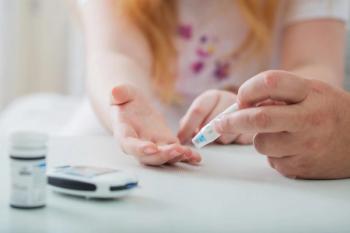
Hypothermia in Seniors: Stay Safe and Warm this Winter
Without proper precautions, the winter months and the frigid temperatures they bring can be dangerous, especially for older adults.
It is wintertime once again, and temperatures outside are falling. Without proper precautions, the winter months and the frigid temperatures they bring can be dangerous, especially for older adults.
Common winter dangers include broken bones from falls on icy steps, sidewalks, and streets, but cold weather can also cause a less obvious, yet still dangerous, condition that can affect older individuals—hypothermia. It is important for older patients and their caregivers to recognize the signs of hypothermia, as well as to know how to prevent and handle it if it occurs.
What Is Hypothermia?
Hypothermia occurs when a person’s body temperature drops below normal and stays low for a prolonged period of time. With advancing age, the body has less fat, slower circulation, and a lower metabolic rate, all factors that limit its ability to endure long periods of exposure to cold. Older adults also have less ability to sense cold.
Seniors are also at risk because their body’s response to cold can be diminished by certain illnesses, such as diabetes, thyroid disorders, Parkinson’s disease, and arthritis, as well as some medicines, including OTC cold remedies.
How to Reduce Your Chance of Getting Hypothermia
A senior can become hypothermic even while indoors, so put the following into practice:
- Set the thermostat to at least 68°F to 70°F. An indoor temperature that feels fine to younger individuals may be unsafe for older adults.
- Close doors to unused rooms to reduce heating costs.
- Block drafts with rolled towels or blankets.
- Take steps to prevent further heat loss if you begin to shiver. You may not be able to think clearly enough if your body temperature continues to fall.
- Dress warmly indoors and outdoors. Wear layered, loose clothing to control body temperature. The layers will trap warm air between them. Tight clothing can keep blood from flowing freely and lead to loss of body heat. Long underwear, socks, slippers, and sweaters over t-shirts can also help you stay comfortable.
- Use blankets or throws on your legs and shoulders, especially if you are sitting or lying down for prolonged periods of time. Hats or caps can also be worn indoors for added warmth.
- Wear a hat, a scarf, gloves or mittens, and warm clothes when you go outside in cold weather. A significant amount of your body heat can be lost through your head, and hands and feet are the first body parts to get cold.
- Stay active, but postpone outdoor activities when it is very cold outside, especially if it is windy. Exercise indoors instead (eg, take walks at indoor malls).
- Ask your doctor if you are taking medications that increase your risk for hypothermia.
- If you live alone, ask a neighbor or friend to check on you.
Warning Signs of Hypothermia
Sometimes, it is difficult to know if an individual has hypothermia. When they start getting too cold, they may not be fully aware of it. Because muscle action generates heat, one of the first things a cold body does is shiver. However, shivering cannot be considered a reliable sign of hypothermia, as seniors tend to shiver less, or not at all, when their body temperature drops.
The best way to identify someone with hypothermia is to look for pale skin, cold feet and hands, and a swollen face. The person may become sleepy, confused, or angry; speak slower than normal; and have slurred speech and difficulty with balance. Late signs of hypothermia include difficulty walking, jerky arm and leg movements, slowed breathing and heart rate, and ultimately unconsciousness. Table 1 lists the signs of early-stage and late-stage hypothermia.
First Aid
Call 911 right away if you think someone has warning signs of hypothermia (Table 2). Stay with the person until medical help arrives, keeping them warm and dry in the meantime. Wrap them in a warm blanket, but do not rub their arms and legs because this will cause cold blood to flow back to the body core and cool the body further. Avoid electric blankets and heating pads because they can burn skin.
If the individual is in the late stage of hypothermia and is unconscious with no pulse, begin CPR right away. Remember, it may take longer to feel a pulse in an individual with hypothermia because the heart may be beating very slowly or faintly. The key to successful first aid for hypothermia is recognizing it as soon as possible, getting help, and preventing it from getting worse. This winter, remember to check on elderly loved ones regularly or, if you live far away, arrange for a neighbor to check on them.
Beth is a clinical pharmacist and medical editor residing in northern California.
Newsletter
Stay informed on drug updates, treatment guidelines, and pharmacy practice trends—subscribe to Pharmacy Times for weekly clinical insights.
















































































































































































































